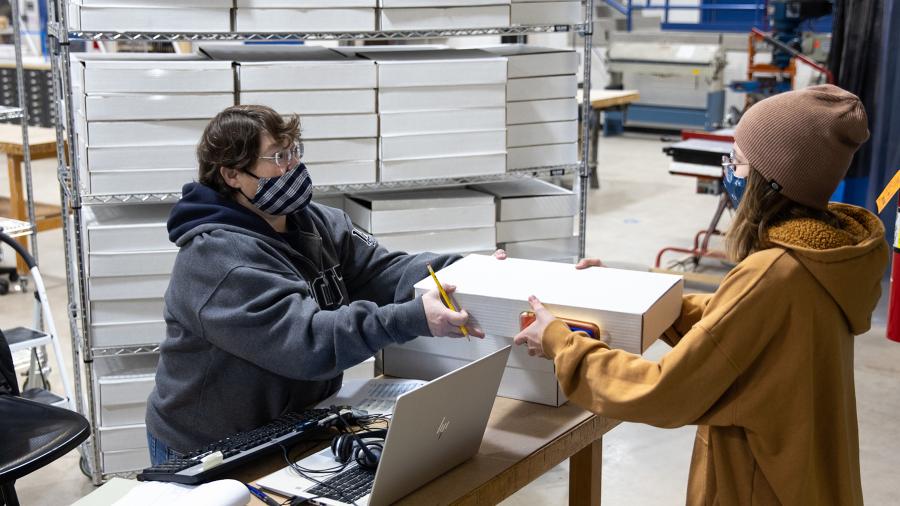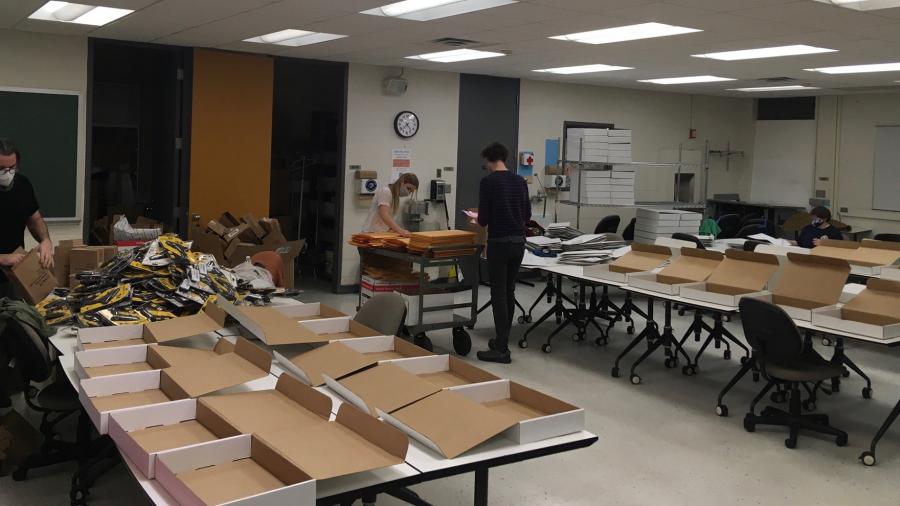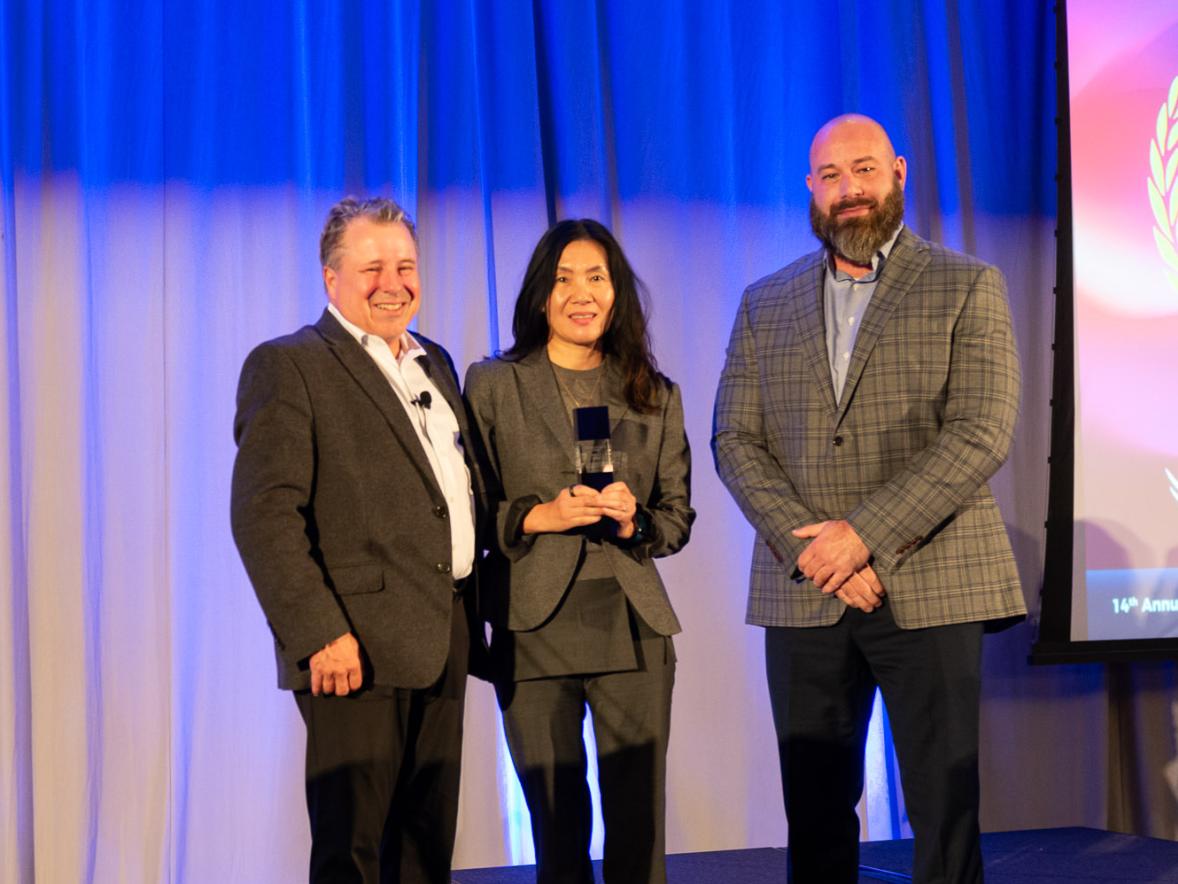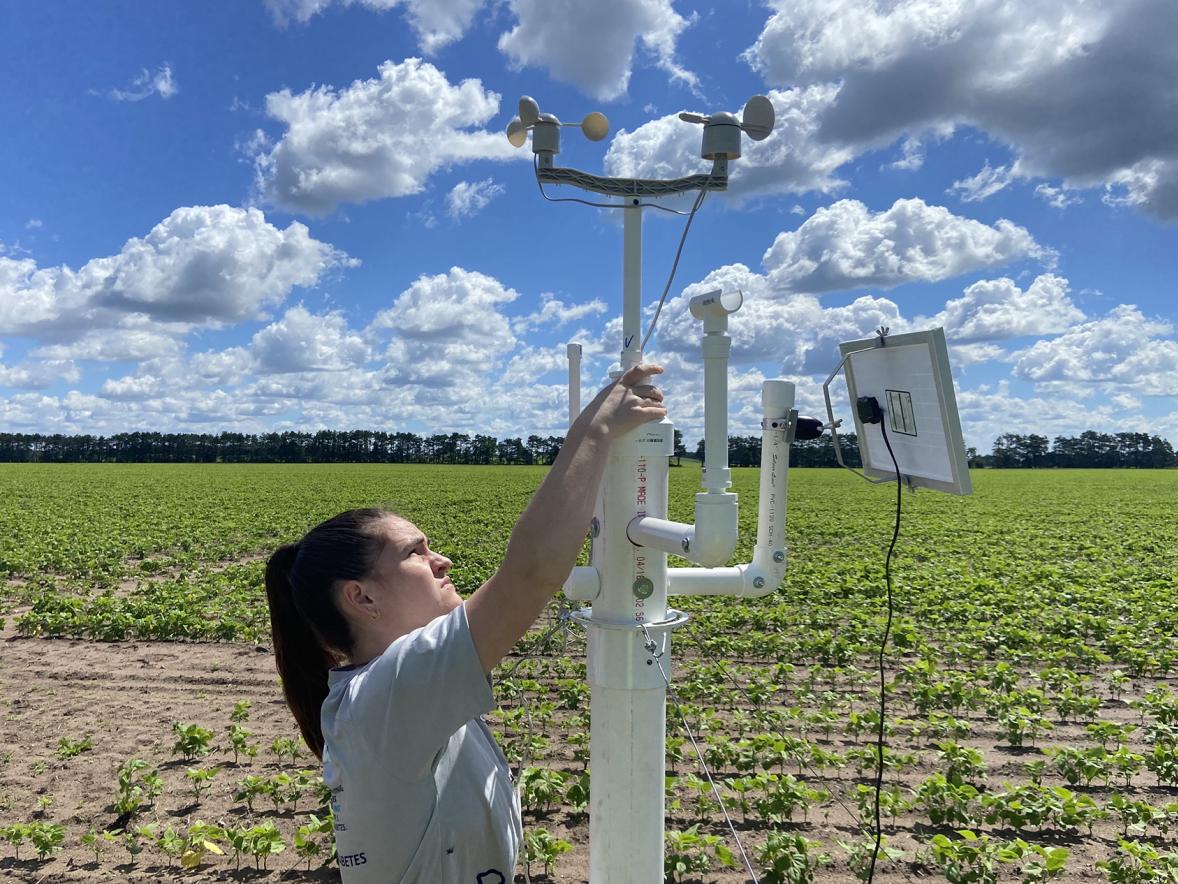In the 3D Design Foundations class at University of Wisconsin-Stout, art and design literally take on a third dimension.
“I’m excited to experiment with a form of art that is completely new to me. I’ve only ever worked in flat forms of art: drawing both traditionally and digitally,” said Bree Marconnet, a pre-Bachelor of Fine Arts Experience student who hopes to major in studio art.
Marconnet is one of 264 students in 13 sections of 3D Design, a course required for Bachelor of Fine Art students in the six School of Art and Design programs.

Their learning curve, however, includes a temporary fourth dimension of sorts. Because of COVID-19 and space limitations, the class is online.
Art and design may begin as an idea, but this semester it also began as a problem — how to convey the concepts of 3D design across cyberspace without compromising hands-on aspects needed to learn the skills.
The solution: Art and design kits. A week before classes began, a group of instructors and staff spent 9½ hours assembling 264 kits on Martin Luther King Jr. Day.
The kits are the bones of seven instructors’ project ideas: linesman pliers, needle nose pliers, glue sticks, a hot glue gun, Elmer’s glue, 40 sheets of 11 by 17 card stock paper, masking tape and 53 feet of wire strands in three gauges.
“We needed the kinds of things that give us options,” said Senior Lecturer Maureen “Molly” Uravitch. “However we can keep them engaged and make the situation as normal as possible is important.”

Creating and assembling the kits required an extra effort going back to last fall. Staff member Cathie Weissman ordered all of the materials, such as locating 528 pairs of pliers. Preassembly, Bob Atwell prebundled glue sticks and card stock. Andrea White prefolded boxes. During assembly, Josh Wilichowski, Brandon Cramm, Uravitch and White worked together to cut 14,000 feet of wire, while Weissman packaged the wire in folders.
They each walked more than five miles the day of the kit assembly, based on Uravitch’s fitness tracker.
When the kits were done, about 220 students picked them up, and the remainder were mailed.
Marconnet was excited to get to work when they opened their box. With their first assignment, a wire replica, they used both pliers and three gauges of wire to recreate an object in their apartment; they chose one of their shoes.
“I was very impressed. Not only was the kit packaged super neatly, papers and wires tucked away into envelopes inside of a small shipping box, but I greatly appreciated the time spent to ensure that every single student has all of the materials that they need for the course. That commitment was worth it for the success of this online course,” said Marconnet, of Waterloo, Wis.
Marconnet is living in an apartment in Menomonie — about half of UW-Stout’s classes are in-person this semester — and working on their 3D projects on a desk mat.
“It has been convenient to put on my safety glasses and get to work here for sure. It certainly is a shame to not be in the classroom together or get to use the Process Lab, but we’re making the best of it that we can at home,” Marconnet said.

Evaluation and adaptation
One of the upcoming challenges will be evaluating students’ work. They will submit photos of their designs. Some training on lighting has been provided. They can use the Process Lab in Applied Arts for better lighting control.
Uravitch believes that properly taken photos will provide a solid basis for grading 3D designs. “Grading art is not arbitrary,” Uravitch said. “You have to create a rubric for each assignment. In the case of the replica, proper proportion and scale relative to their original object in addition to craftsmanship will be evaluated.”
Uravitch, a 2020-21 Outstanding Teacher in the College of Arts, Communication, Humanities and Social Sciences, has adapted her usually high-energy teaching methods to keep online students engaged. She learned how to edit tutorials and do voice-overs while making instructional videos using QuickTime and iMovie.

Marconnet said Uravitch’s tutorials “are super helpful.”
Uravitch has divided her 22 students into four discussion groups. “So much discovery happens in the classroom while seeing other students’ work. I’m trying to simulate what would happen in the classroom,” she said.
Virtual learning — when required — is working for Uravitch.
“I had five students who said the holiday break was too long, that they were excited to come back. I found that really encouraging,” she said. “I’ve learned how important it is to listen to the students about what’s working and isn’t.”
The Pre-BFA Experience helps new students discover if a BFA is right for them. Faculty and staff provide guidance, including how to develop a portfolio and how to meet requirements for any of the six programs UW-Stout offers.
###







